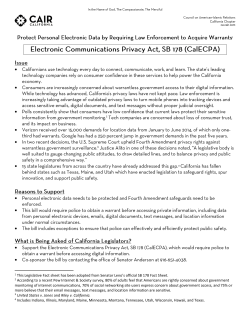
The Economic and Fiscal Impacts of Montana`s Oil & Gas Industry
The Economic and Fiscal Impacts of Montana’s Oil & Gas Industry Dr. Scott Rickard MSU Billings Center for Applied Economic Research ontana’s oil and gas industry Roosevelt) represented 80% of the 29.3 mil- produces incomes and revenues lion barrels of crude oil produced in M far larger than you would expect Montana (Figure 1). Natural gas wells in given its employment base, and it contributes Phillips, Fallon, Blaine, and Hill counties proportionally more taxes and revenues to produced nearly three-quarters of the state’s state and local governments than the typical total production. Based on average 2013 Montana business. first- or wellhead-prices, total Montana oil and gas (O&G) production was worth $2.6 Oil and Gas Production It all starts with producing wells. In 2013, three counties (Richland, Fallon, and billion. The total quantity of oil production has been increasing for the past few years, but Figure 1 MT Oil and Gas Production in 2013 30 MPA - The Treasure State Journal • 2014 of these occupations require technical training and experience rather than a typical college degree. Figure 4 lists the estimated number of Montana jobs associated with its O&G economy. A little less than one-half of these positions (45%) are with Montana firms producing oil and gas products (upstream), while the rest (55%) are engaged in distributing these energy supplies to Montana households and businesses (downstream). In the strictest sense, the size of the O&G industry could be measured as the sales or number of employees and owners working on Figure 2 Production and Inflation-Adjusted Value of MT Crude Oil Production iv after adjusting for the effects of inflation, the dollar value of production in 2013 is still Montana’s Oil and Gas Economy For many people, discussing an economy exploring, drilling, producing, refining, and transporting crude oil or natural gas from a Montana well to a location where it becomes a ‘final’ product such as gasoline, diesel fuel, 15% below where it was in 2008, when pro- is synonymous with discussing jobs. or natural gas. Loosen this classification a lit- duction of 31.6 million barrels was worth Montana’s O&G industry continues to offer tle and we capture the reality that some of $2.84 billion (Figure 2). above-average wages to its production work- Montana’s O&G companies work on North ers. Figure 3 lists average annual salaries for a Dakota or Wyoming operations. number of O&G-related occupations. Many For this report, let’s focus on two groups: 1. The O&G Production Industry -The businesses involved with exploration, drilling, producing, refining, transporting, and constructing infrastructure for Montana’s O&G industry. Without the oil-bearing land beneath us (or our neighbors) and citizens welcoming its development, these jobs and money wouldn’t be there. vii viii 2. The O&G Economy – the O&G production industry plus those businesses involved in getting the final products to Figure 3 Oil and Gas Occupations v Since the 1870s Gough, Shanahan, Johnson & Waterman, PLLP has been working with Montanans and clients active in Montana to find creative solutions to legal needs. Founded in 1979, Hydrometrics provides an expansive range of science and engineering services. We have serviced many projects, large and small, for the petroleum and mining industries, ranging from the Arctic Circle to South America. For more information, contact: Billings, MT - Al Hilty, P.G. (406) 656-1172 ahilty@hydrometrics.com P.O. Box 1715, Helena, Montana 59624 Phone: 406-442-8560 • Fax: 406-442-8783 www.gsjw.com • Oil & Gas Industry Support • Refinery & Marketing Terminal Environmental Support • Coal Bed Methane Support • Civil, Geotechnical, Chemical, Geological, and Petroleum Engineers • Hydrogeologists, Chemists, and Reclamation Specialists • Permitting and Compliance • EA and EIS Support Helena, MT - Mike Wignot, P.E. (406) 443-4150 mwignot@hydrometrics.com • Remedial Design and Construction Missoula, MT - Doug Parker, P.G. (406) 721-8243 dparker@hydrometrics.com • SPCC and SWPP Preparation • Dam Design and Investigation Official Publication of the Montana Petroleum Association • 2014 31 age labor income for jobs in O&G production was more than twice the economy-wide average, and each job contributed to Montana’s GDP at four times state averages. Considering Montana’s complete O&G economy, these totals grow to more than 12,500 jobs, $750 million in labor income, and $2.2 billion towards 2013 GDP. Other parts of Montana’s economy benefit from the O&G production thanks to local spending by these O&G firms. In 2013 an additional 4,900 jobs involved selling goods and services to the O&G production industry. This includes, for example, nearly 150 auto repair and maintenance positions and 175 additional Montana employees of accounting and tax preparation firms. The incomes, profits, and rents earned by industry Figure 4 Employment in O&G Industries vi workers support even more local economic activity, representing $175 million dollars in consumers and businesses. This includes accounted for more than 5,400 jobs and over petroleum product wholesalers and gas $550 million in labor income, and added labor income. In this case, think over $35 station employees. more than $1.5 billion to Montana’s overall million in wages and income flowing to In 2013 O&G production directly Gross Domestic Product (GDP). The aver- ix Montana wholesale trade businesses and $37 million going to the workers of physicians’ office staff, dental clinics, and hospital employees. Summing up these direct and direct benefits, in 2013 Montana’s O&G Production Industry contributed over 15,000 jobs, $950 million in wages and income, and more than $2.25 billion to state GDP. Fiscal Contributions to Montana’s Economy Montana’s O&G production industries Figure 5 Direct Contributions of MT O&G Production and O&G Economy x Ezzie’s Wholesale, Inc. Lawrence R. “Lary” Poulton Ph. (406) 654-2331 Cell: (406) 390-8056 • Diesel Fuels • Propane • Motor Oils • Gasoline • Bulk Oil WATS 800-892-6874, FAX 406-654-2887 Box 1770, Malta, MT 59538 32 MPA - The Treasure State Journal • 2014 contribute far more in taxes and revenues to HoHn EnginEEring, PLLC Thomas K. Hohn, P.E. 2708 1st Avenue North, Suite 200 Billings, Montana 59101 Telephone: 406-655-3381 Fax: 406-655-3383 Email: hohneng@hohneng.com Website: www.hohneng.com Quality Petroleum Engineering Services Since 1984 Figure 6 Total Contributions of MT's O&G Production Industries 2013 state and local governments than the average business or employee. Earlier we saw that a few Montana counties make up the bulk of O&G production. Similarly, two counties (Richland and Fallon) produce two-thirds of all O&G production taxes and a total of six coun- Figure 7 O&G Production Tax Collections by County 2013 xi ties account for nearly 85% of these taxes (Figure 7). Approximately 8% of Montana’s oil production, 27% of its natural Montana’s O&G production industry, and the businesses which gas, and 4% of its associated gas is produced on federal lands. While indirectly benefited from its existence, generated nearly $350 million these percentages are not large when compared to MT’s overall O&G in state and local taxes in 2013. Nearly two-thirds of this total ($226 production, policy decisions adversely effecting how federal lands are million) came from production taxes on producing wells. Over $70 used for energy development could still harm the MT economy. In million of centrally assessed property taxes were paid in 2013 on the 2013 O&G production on federal lands produced $41.7 million in Montana equipment and facilities involved in O&G production royalties, rents, and bonuses for Montana and local governments. (Figure 8). And nearly $50 million in additional individual and corpo- An Aside on Refining: There are four refineries in Montana producing northern production co. Box 4068 - gillette, wY 82717 gasoline, diesel fuels, and other petroleum products. (307) 682-5708 Most of the crude oil used in production came from workover - Completion rigs Canadian (88%) or Wyoming (10%) wells. These refineries have spent the past several years reconfigur- Serving Roundup and Eastern Montana Mike Palagyi Cell: (406) 855-1695 ing themselves to be able to refine these heavy out-ofstate crude oils. In some ways this diversifies Montana’s O&G production industry, since an event reducing Montana production would have a limited impact upon Montana refineries. In 2013 Montana refineries employed just over 1,000 people and, as noted, paid very good wages. The value added from Montana refining contributed over $1 billion to state GDP. Official Publication of the Montana Petroleum Association • 2014 33 Figure 8 Federal O&G Payments 2013 xii rate taxes were paid by all of the business activity associated either directly or indirectly with Montana’s O&G production industry. xiv The Benefits of Expanding O&G Production Expanding Montana’s O&G production industry via increase exploration, drilling, and production benefits Montana’s economy. For example, a recent estimate found that the drilling of an additional oil well which pro- Figure 9 Centrally-Assessed Property Taxes 2013 xii duces at the average rate adds $6 million in gross output over its lifetime, $2 million of which represents new contribution to state GDP (see Figure 11 xv) . This new well benefit, with this new well generating over lent of raising state income taxes by one- $625,000 in additional state taxes and rev- third, or more than doubling vehicle licens- enues. xvi ing fees. would support an additional 11 jobs and Oil and gas are significant industries in $665,000 in new wages to the Montana Summary drilling and extraction workers. As these funds are spent in Montana, either by the businesses directly involved with oil and gas or by these additional workers, more Montana businesses and workers benefit. Overall, this additional productive well increases Montana gross output by $9 million, adds $3.6 million to Montana GDP, In this analysis, you can see the contributions made by Montana’s oil and gas sector: State and local governments would also tant role in our state’s economy for many years into the future. over 15,600 Montana jobs paying two-thirds more than the state average; a total of $2.3 billion or nearly 6% of Montana’s GDP; contributions to the state economy that are equivalent to an average Montana industry of i. Oil prices based upon Energy Information Agency (EIA) 2013 average domestic crude oil first purchase price ($88.73) (EIA). iii. Natural gas prices based upon Annual Energy Outlook (AEO) 2014 Henry Hub spot price for dry natural gas 2013 Average ($3.60). In 2013 Montana state and local governments collected nearly $1 million per day in taxes and revenues contributed by O&G production industries and the firms and workers that depended upon it. This level of funding References Montana Board of Oil and Gas Data. ii. twice or more its size. and produces an additional $1.5 million in wages while supporting 33 additional jobs. Montana, and they will likely play an impor- would be hard to replace, being the equiva- Figure 10 Tax and Revenue Contribution of MT’s O&G Production Industry 34 MPA - The Treasure State Journal Figure 11 Economic Impacts of an Additional Well • 2014 iv Energy Information Agency v. Occupation Employment Statistics, US Bureau of Labor Statistics, www.bls.gov. tune, but distances limit how much we can hope to gain. It’s difficult to disaggregate in-state from out-of-state production. xiii. Montana Dept. of Revenue. ix. vi. This is the approach taken by the American Petroleum Institute’s (API) 2013 nationwide analysis: Economic Impact of the Oil and Natural Gas Industry on the US Economy in 2011. xiv. Analysis: A composite of MIG IMPLAN analysis runs of tax impacts for industrylevel contributions to state’s economy. x. Data sources: BLS (employment and wages), Minnesota IMPLAN Group (MIG) data, and adapting analysis reports from API and Considine (2013). xv. Considine, T. “The Economic Value of Energy Resources on Federal Lands in the Rocky Mountain Region” 2013. Found at http://www.westernenergyalliance.org/site s/default/files/2013%20Energy%20Dev% 20Impact.pdf xi. Montana Dept. of Revenue. Quarterly Collections and Distributions of O&G Production Taxes for Q1-Q4 of 2013. Quarterly Census of Employment and Wages, www.bls.gov. vii. Pipeline Transportation could possibly be included in either group. I’ve labeled it a Production Industry in part because the people who have a problem with O&G production also seem to dislike pipelines. viii. Some of this Montana business is due to production taking place in ND or WY. For example, when a ND producer contracts with a Montana-based technical specialist, we benefit from our neighbor’s good for- xii. FY2013 estimates from http://statistics.onrr.gov. Headquartered in Billings, Montana, Ballard Petroleum Holdings LLC is a privately held, independent energy company engaged in the exploration, development, and production of oil and natural gas reserves in the Rocky Mountain states. Its principals have focused on this region since establishing roots in Billings in 1963. xvi. This modifies Considine’s example, where the well was drilled Ballard Petroleum Holdings LLC William W. Ballard Chairman and Chief Executive Officer David W. Ballard President Jeffrey S. Ballard Senior Vice President Investor Relations Dennis M. Campbell Vice President of Land Craig S. Marshall Chief Financial Officer Steven W. VanDelinder Director of Exploration James L. Else Director of Engineering and Operations 845 12th Street West Billings, MT 59102 Telephone: 406-259-8790 Fax: 406-259-3884 Official Publication of the Montana Petroleum Association • 2014 35
© Copyright 2025









